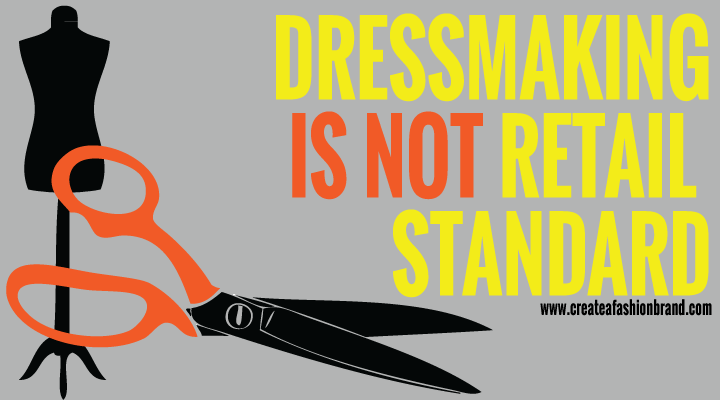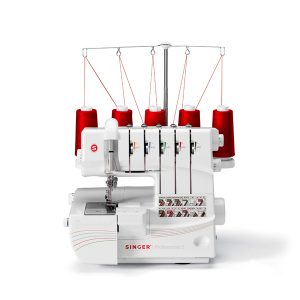I was having an interesting conversation last week with someone looking to start-up a new fashion brand. They had no background in fashion or retail, which is quite common and actually not as big a problem as many people imagine. To get started, they chose to learn how to make clothes by going to dressmaking classes. I thought that this was fantastic, and it’s quite unusual for most of my clients. My personal belief is that if you can make your product, whatever that product is, then you will always be a better designer. You’ll understand the machinery used in the process and what’s possible and impossible. You’ll also gain a better understanding of the difference in fabrics and their properties, and you’ll learn about what you’re asking your factory do.
This person even learned how to pattern cut to ensure that their brand was the best that it could be. I was pleasantly surprised to hear this, and I could relate as I can pattern cut and am currently making my own wedding dress. The problem was that even though this person had learnt all these skills, they were still frustrated that a factory wasn’t giving them what they wanted. So we talked for a little while about the process they went through and the problems they were having with the manufacturer.
After a brief conversation I realised that because this person had learnt to pattern cut, their problem wasn’t the construction or asking the factory to do something impossible. It was the language. I’m not talking about English and Mandarin either. This person spoke fluent Mandarin, Cantonese and English and had no problems communicating with the Chinese factory. No, the problem was the language of sampling…
Dressmaking is NOT the same as manufacturing. It’s NOT retail standard!
You should always keep the “Retail Standard” in mind. The language, terminology and format are all different, as is the way in which you lay out your sketches. In fact, some professional designers aren’t even capable of speaking this language correctly.
For example, my specialty is knitted fabrics, and it amazes me how many people write or ask me to put “Serge” (a type of stitch) in a technical pack. Even designers have asked for this. If you type “Serger” into a search engine, most websites will tell you that it’s a machine which creates different types of locking stitch. In reality it’s actually called an “Overlocker”.
A Serger is a dressmaking term for people who make things at home. The term was made up in America and is now spreading. If you ask for this in a professional factory, chances are they will look at you like you’re mad, because the machines are not a serger or serging machine. They don’t serge fabrics and they never will. What they do do is overlock, flatlock, twin needle and many others, with many different thread counts.
The Correct Description
This is a minor problem compared to many others, but it illustrates my point. If you use the word “serge” at least you know the type of stitch you need and the type of machine for the correct fabric, which is great. You are one step ahead of people with no experience. But you need to make a distinction between knowing the practical part of making one item and being able to describe it correctly. In retail, things are done to a professional, retail standard. It’s different from the world of factories where the machines are different, the pattern cutting is different and the terminology is different.
Like any other language, it’s better to learn from someone who is a native speaker. The difference in this case is that if you don’t, you’ll waste time and money on sample attempts that won’t be what you actually want or need. It’s better to take the time to set things out professionally from the beginning, and get the sample back right the first time round. Websites, pattern cutting books and other sources you find won’t use the retail standard for most things. The people using the terminology and tools are in the business and working with it every day, not writing about it. That’s why the best resource that I know about to help you to learn the retail language is this blog.
Working With a Professional
I always suggest going to a professional retail designer (not the same type as a fashion designer). It will save you time, money and effort when you have so many other things to think about. If you can’t get the product made, then you might never get your brand launched, or it might take so long that someone else beats you to the finish. The samples will not be what you want, you’ll get frustrated or give up, all because you made a mistake that could have been avoided. I suggest using a “translator” (a retail designer who can create Tech Packs) because they will be able to draw the garment in the right language ( there is a specific way to draw flat drawings in a technical pack ). They’ll also be able to translate any terminology that you might be using into retail standard quality. If you’re ready to hire someone for this job, here a few things to keep in mind before you start the job search.
Choose the Correct Specialist
If you have a specialist product like denim, knitted fabrics or accessories, then please go to a retail designer who is a specialist in that area. Like any language, there are different dialects. In this case, there is a unique set of vocabulary between different garment making processes and materials. Most people don’t know anything about the special machinery that is used for certain garments or processes. That means that if you hire an average design with no depth of knowledge, you’ll be wasting your time and money.
Hire Someone With Experience
Don’t use a graduate because they are cheap. Many years ago I was a graduate and I can tell you that the things I learnt from university were wonderful and creative, but they weren’t the real world. If you don’t pay much money for a professional, then the result will be less than you hoped for an you honestly might as well do it yourself. Knowledge only comes with experience. That takes hard work and some years on the job.
Make Sure They Know About Tech Packs
If you’re not sure who to hire, I wrote a great blog post called: Which Designer Should I Choose. In this post I explain some of the key things to look for on a CV and I explain what is best for your business. To summarize the post: look for designers that have worked for suppliers or have some practical experience. You want this because there is always a likelihood that they will have to create Technical or Tech Packs.
To bring this post to close, I’ll mention that I have a practical background in building brands and creating tech packs. On my other site: Fashion Service HK, we offer this service. If you’re interested in learning more, it’s worth having a look at our Tech Pack Page. If you’ve enjoyed this post and learned a thing or two, please use the buttons below to share it!

